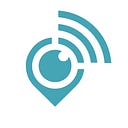UI/UX Techniques for a Healthcare Application
An article published by Forbes last year stated that there will be an increment in the number of patients, whereas the number of doctors will remain the same. Nowadays, the amount of time and the number of interactions between a patient and a doctor has reduced. The reason being, doctors end up using most of their time managing paperwork. This is where UX comes into the picture. Healthcare applications, if designed according to the expectations of patients and medical practitioners will manifest more time for doctors to give personal attention to patients.
UI/UX design can play a key role in building the future for healthcare applications. How can this be done? By designing mobile/web healthcare applications according to the patient’s and the doctor’s needs. Product designs and their implementations are the key factors that affect usability in healthcare.
Techniques
There are many UX methods but the below mentioned methods offer time and again worthy inputs to UX designs.
- Card Sorting
- Surveys
- Focus Groups
- Eye Movement Tracking
- Field Studies
- Usability Testing
- User Personas
Anti-patterns
Several times the common mistakes while carrying out user research for healthcare applications include:
1. Applying the wrong research method
User Research methods include surveys, focus groups, usability testing, and so on. The method of your choice should depend on the questions you have and the stage of development. A survey is often appropriate for collecting opinion-based data, but not for interaction. Applying the wrong method can yield misleading conclusions.
2. Not taking users’ privacy into consideration
Since medical apps deal with sensitive information and personal health issues, it’s important to make sure that the colors used in the app’s design are soft, neutral, and don’t call for too much attention. This will help users safely look things up on their mobile devices, even in public, and is an especially critical aspect of developing an app focused on healthcare that is often stigmatized (such as HIV/AIDS, diabetes, mental health disorders, etc.)
3. Asking the wrong people/not real users for feedback
They are not representative of your target audience. Your target audience should comprise people who will actually use the healthcare application.
4. Asking the wrong questions
Sometimes, inexperienced facilitators may ask the wrong questions which lead to a biased study and erroneous conclusions. Usability testing produces much more relevant results when conducted by someone who understands behavioral research. Users should be asked for the pain point they have while using any healthcare services.
How to solve it?
- Conduct research using correct, unbiased methods
- Conduct research on real users
- Study industry trends
Conclusion:
Healthcare applications are developing along with great trends and technology. They provide various benefits and features to create a better world. Users need to have an emotional connection to the experience of using your product. If you are merely creating an interface and not an experience, you have a limited chance of gaining the following you need to make your product a success.
UIs need to be simple to navigate, easy to use and created with the proper colors and fonts for the audience. Also, don’t forget to integrate the end-user feedback while remaining consistent throughout the design.
